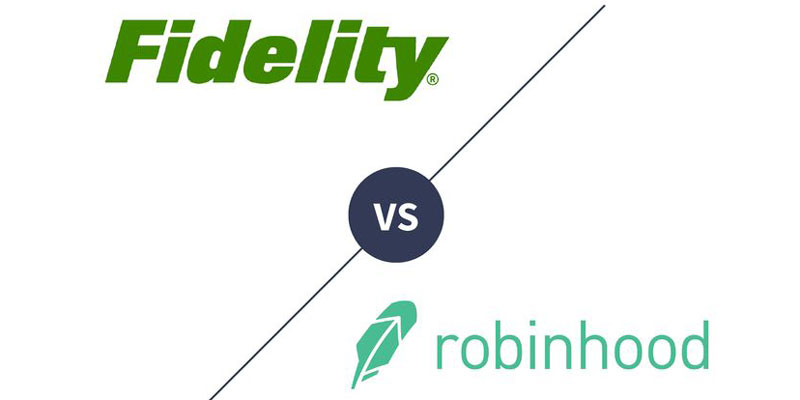Investment At Every Age
Jan 24, 2024 By Triston Martin
Saving and investing for a secure financial future is a great idea at any age; however, the strategy you adopt will vary according to your age, lifestyle, and comfort level with risk.
When you're getting closer to retirement age and need to start withdrawing your money, you can't afford to take as much of a chance with your investments.
Even though you may be more risk-tolerant as a young person, you also have less money to work with, so you'll need to prioritize where your savings go.
To help you with Investing at every age, we've included some guidelines below.
Beginning Retirement Planning: Investment for Early 20s

Illustration of Asset Distribution:
- Stocks: 80% to 90%
- Investment Bonds: 10% to 20%
If you just finished college and are still strapped with student loan payments, don't let that stop you from beginning an investment portfolio. Even if you can't afford to put away the whole 10% in your twenties, you should put away as much as you can for retirement in a 401(k) or IRA through your employer or on your own.
The maximum amount that may be contributed to a regular IRA or Roth IRA in any given year is $6,000 as of 2022, as set by the Internal Revenue Service (IRS). In 2022, the annual limit for 401(k) contributions is $20,500. If you work for a company that participates in a 401(k) plan, they may match your contributions up to a set percentage of your pay 401(k).
If you make an investment today, you'll have more time to see returns than anybody else. The power of compound interest ensures that money invested in this decade will increase at a rate higher than ever before. Because you have more time to process the changes that occur in the market, you should put your attention on companies with a higher potential for rapid development and avoid investments with a low potential for growth, such as bonds.
Prime Working Years: Investment for 30s

Illustration of Asset Distribution:
- Stocks: 70% to 80%
- Investment Bonds: 20% to 30%
If you delayed investment in your 20s owing to settling off student debts or the ups and downs of establishing your profession, you should begin saving in your 30s. You are still young enough to receive the benefits of compound interest, but you are now mature enough to invest 10–15 percent of your salary.
You should always prioritize saving for retirement, even if you're just getting started on your mortgage or family. You still have 30–40 productive years of life ahead of you; now is the time to make the most of them. Invest at least up to the point where you'll receive a 401(k) business match, and if at all possible, invest the maximum amount allowed. You should also contribute the maximum amount to your individual retirement accounts.
You can still take on certain risks, but you may want to consider including bonds for more security.
Retirement-Minded: In Your 40s

Illustration of Asset Distribution:
- Stocks: 60% to 70%
- Investment Bonds: 30% to 40%
It's never too late to start saving for retirement, but if you've put it off until now, even if it's because you were in a low-paying position and have now switched to a more profitable position, it's time to get serious. Don't waste this opportunity if you're on track; instead, focus on expanding your portfolio. You've reached the middle of your career and are on the verge of reaching your highest earning potential.
Even if you are putting money down for your children's education or continuing to make payments on your mortgage, you should put retirement savings at the center of every financial choice you make. You still have time to catch up if you're smart, but it will only allow for a few diversions. If you are confused about which investments to make, it is recommended that you see a financial counselor. To give your savings the best chance of growing at a rate faster than inflation, you should put money into riskier investments like equities.
But "aggressive" doesn't equate to "careless." Don't fall for "too good to be true" offerings; instead, focus on assets that have a history of success. And keep funding your 401(k) and IRAs to the maximum allowed amounts.
The Final Countdown to Retirement: Investment for 50s to 60s

Illustration of Asset Distribution:
- Stocks: 50% to 60%
- Investment Bonds: 40% to 50%
You are coming closer and closer to the age at which you may retire, so now is not the moment to let your attention wander. Even if you invested aggressively in the stock market when you were younger, you should shift your strategy to one of more conservative as the time draws nearer when you will need to withdraw funds from your retirement account.
If you're unwilling to put all your eggs in one basket, diversifying into lower-yielding assets like bonds and money markets may be a smart choice. Recognize your blessings and begin planning for a comfortable retirement. Seeking outside help in determining when it is safe to walk away might be a good first step in achieving this sense of confidence.
Saving extra money is another option to catch up. For those who are getting close to retirement age, the IRS authorizes increased contributions to investment accounts. For 2022, the catch-up contribution limit for 401(k) plans is $6,500 for workers aged 50 and over. This means that anyone above the age of 50 will get an extra $27,000 ($20,500 + $6,500) to put into their 401(k)s. In 2022, those who are 50 or older and have either a regular or Roth IRA can put in a maximum of $7,000.
Retirement: Age 70s and 80s

Illustration of Asset Distribution:
- Stocks: 30% to 50%
- Investment Bonds: 50% to 70%
Now that you're retired (or will be shortly), you should stop worrying so much about your portfolio growing and start thinking about maximizing your income. You shouldn't sell all your investments just yet, though. Invest mostly in dividend-paying equities and enhance your bond portfolio.
When you reach this age, you are eligible to receive retirement income from a variety of sources, including Social Security, a workplace pension (if you have one), and beginning in the year, you turn 72, RMDs from your retirement funds.
If you fail to withdraw the required minimum distribution (RMD) before the deadline, you will be subject to a 50% penalty. Since Roth IRA owners are exempt from RMDs, they can let their accounts continue to grow tax-free for the benefit of their heirs after their deaths.
Moreover, if you have a 401(k) at your current place of employment and are still actively working, you are exempt from RMDs.
Additionally, the SECURE Act of late 2019 allows those who have earned income not over the IRS income limitations to continue making IRA contributions (even to regular IRAs).
In Concluding
If you wanted to plant a tree, the optimal moment to do it was 20 years ago, according to a Chinese saying.
An investor's mindset must be like that. Investing at every age couldn’t be a problem; it's never too late to get started, but the sooner, the better. Nonetheless, you may always make a change.
If you want your investing strategy to last as long as you do, make sure it considers your age. Having a conversation with a competent financial expert who can assess your current situation and provide the next steps is also recommended.

Best Online Store Credit Cards

Fidelity Investments vs. Robinhood

Vietnam's 2024 Fintech Landscape: Key Insights and Developments

Uncovering the Best Alternatives to Edgewonk: Elevate Your Trading Game

Stated Value Car Insurance

U.S. Bank and Billtrust Boost B2B Payments

Marqeta’s Processing Volume Hits $71 Billion

Should You Cosign A Student Loan For Your Child?

How to Buy Stocks Step by Step: A Comprehensive Guide to Investing

